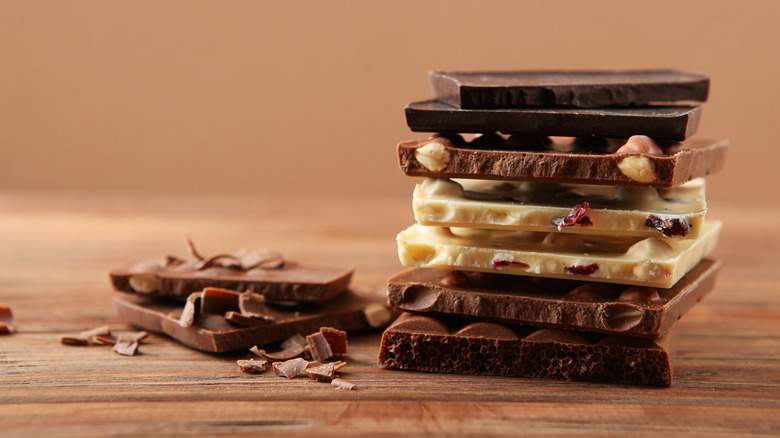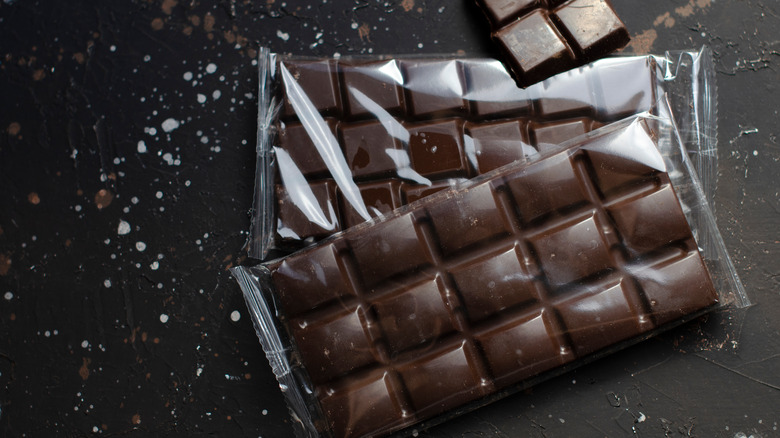Milk Chocolate Vs Dark Vs White: Which Has The Longest Shelf Life
With a Statista report projecting that the average consumption of chocolate per person would reach 2.4kg this year, there's no denying chocolate's status as a pantry essential, and not just for bakers and chocolatiers. To make the most of your supply so you have a stash of these decadent treats ready whenever you're craving one, know the shelf life of your preferred chocolate.
Since milk fat spoils quickly when exposed to light and air, the amount of dairy in a bar of chocolate is a determining factor for its shelf life. Dark chocolate has the least amount of milk fats, thus it can retain its quality for about 2 years, according to a report from Iowa State University. The length differs for every piece, though. The higher the percentage of its cacao content, the less dairy it contains, and therefore the longer you can store it. On the other hand, white chocolate lasts for only 6 months since it's made of sugar, dairy, and at least 20% cocoa butter but zero chocolate solids, which come with natural preservatives. Milk chocolate, which contains at least 12% milk, sits in the middle. It can be stored for as long as a year.
Buying the longer-lasting dark chocolate seems more economical, but the best type of chocolate is still a matter of personal taste. Dairy may make chocolates more perishable, but it also makes them creamier — part of why so many people enjoy eating them.
Store chocolates at room temperature with low humidity
Contrary to popular belief, you shouldn't keep chocolates in the fridge. Store them instead in a dark, dry area of your pantry where the temperature remains constant between 50 to 70 degrees Fahrenheit so their milk fats don't oxidize. Storing them in the fridge poses a higher risk of temperature changes whenever you take them out to eat or use in baking. This creates condensation that causes sugar bloom, or the formation of a grainy, dusty-looking appearance on the chocolate's surface. Another type of bloom happens whenever chocolate gets exposed to warm temperatures: The fats in the cocoa butter melt, separate, and rise to the surface as whitish streaks known as fat bloom. Although neither type of blooming makes chocolate inedible, they diminish the silky texture that contributes to its decadence. Chocolate can also absorb strong odors, which negatively affect the aromatic aspect of the chocolate-eating experience, so store it in a sealed container before placing it in the pantry.
You can freeze a bigger stash of chocolates, but to avoid a drastic temperature change that triggers blooming, Iowa State University recommends placing them in the fridge first for 24 hours. Before putting them in the freezer, encase the chocolates in plastic and place them in an airtight bag. Once you're ready to use them, place them again in the fridge — still inside the bag — for 24 hours before thawing them at room temperature. Unwrap the chocolates only at the end of the thawing process.

